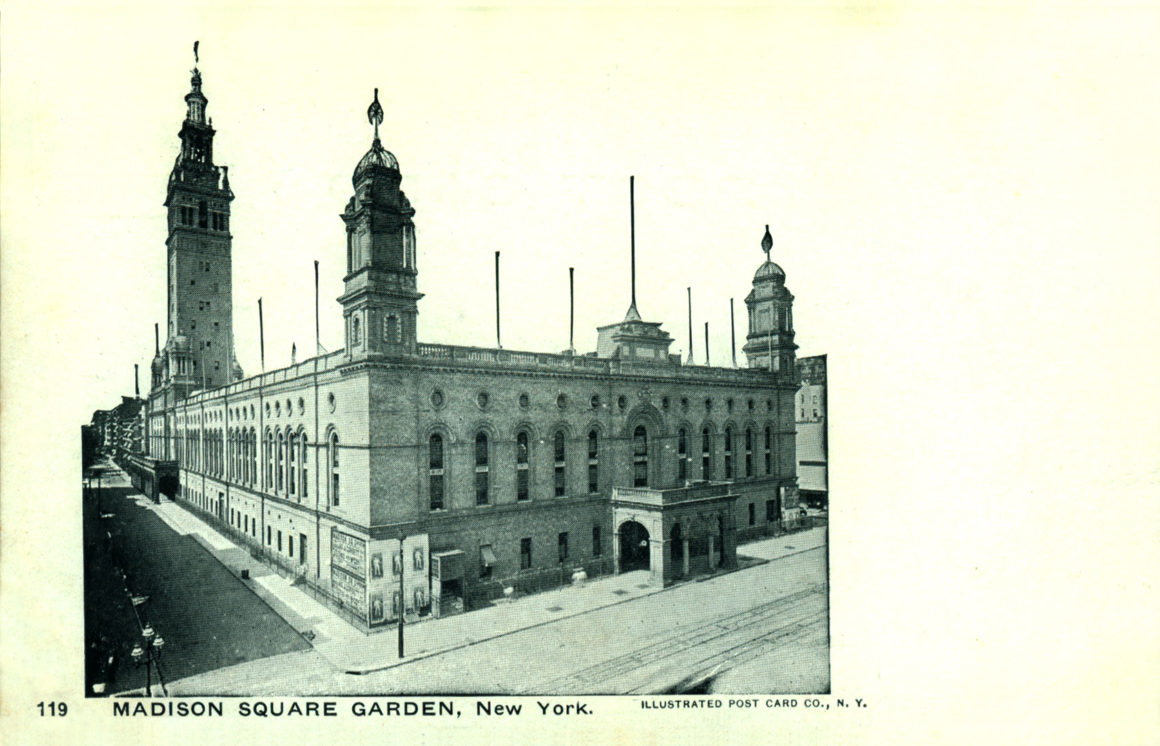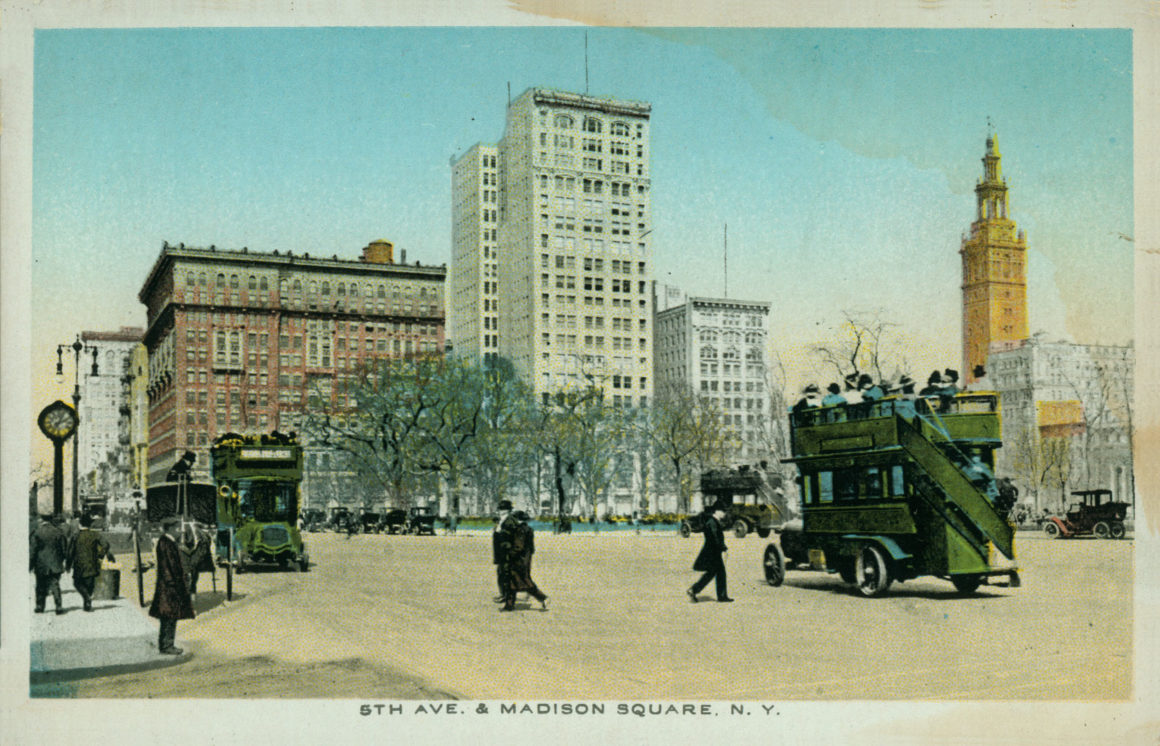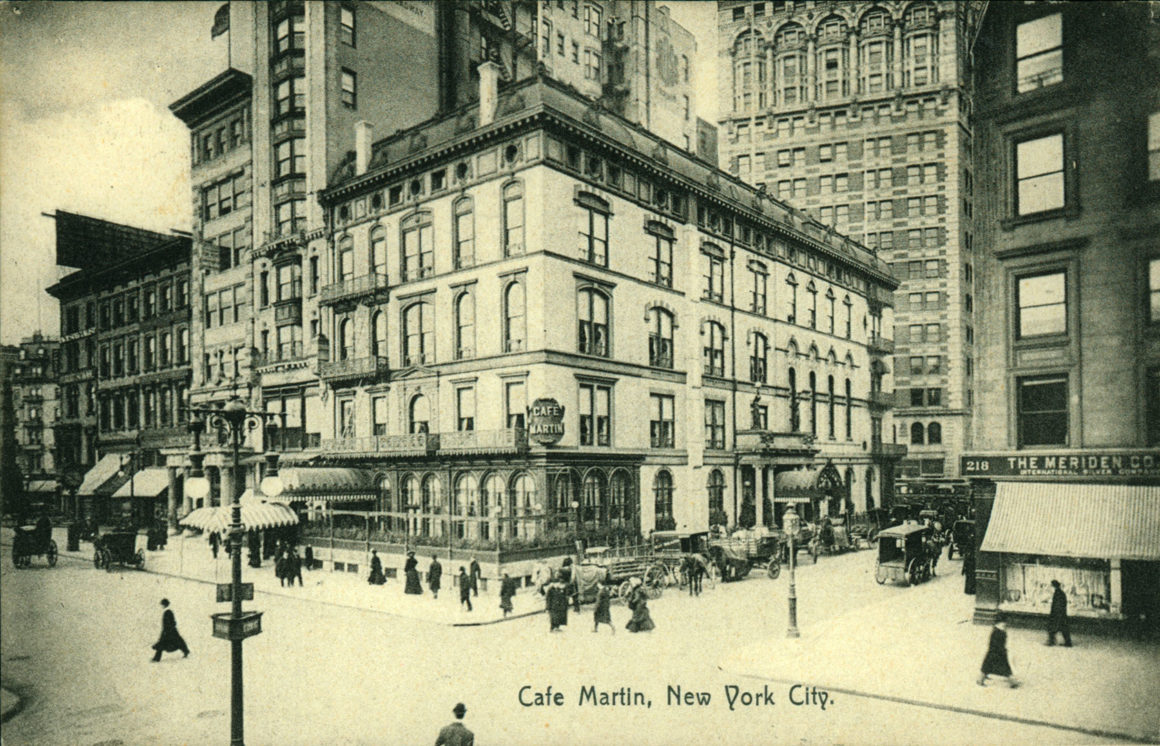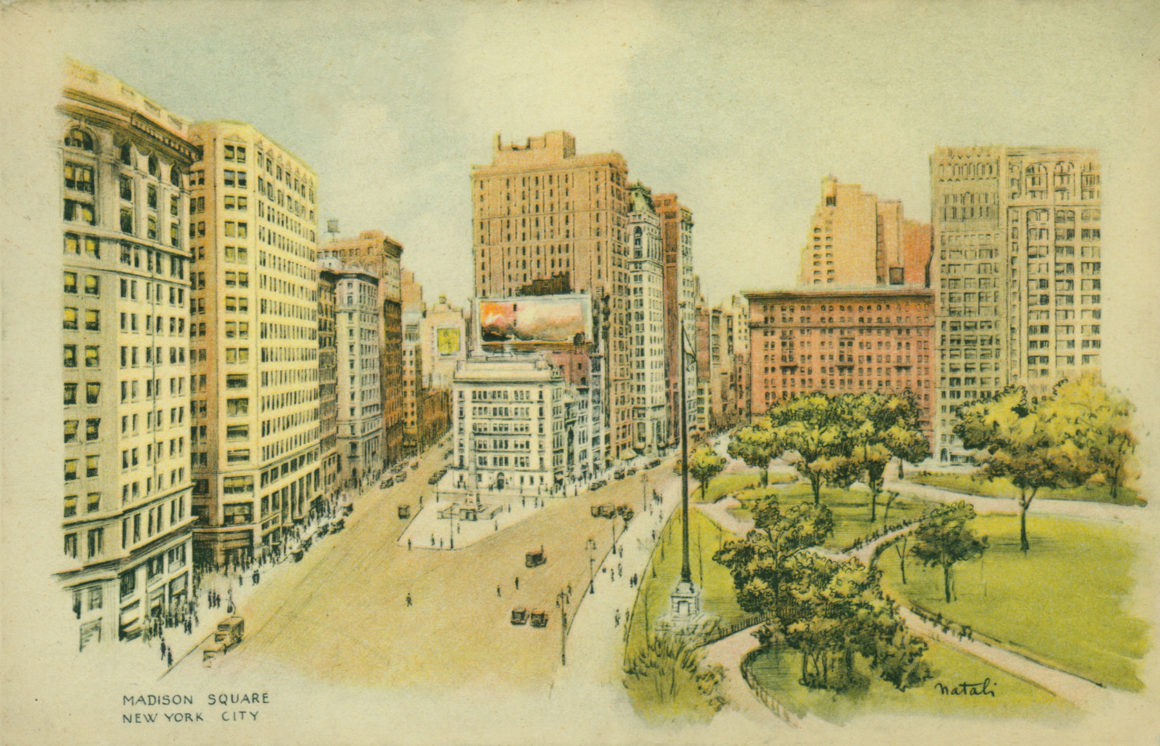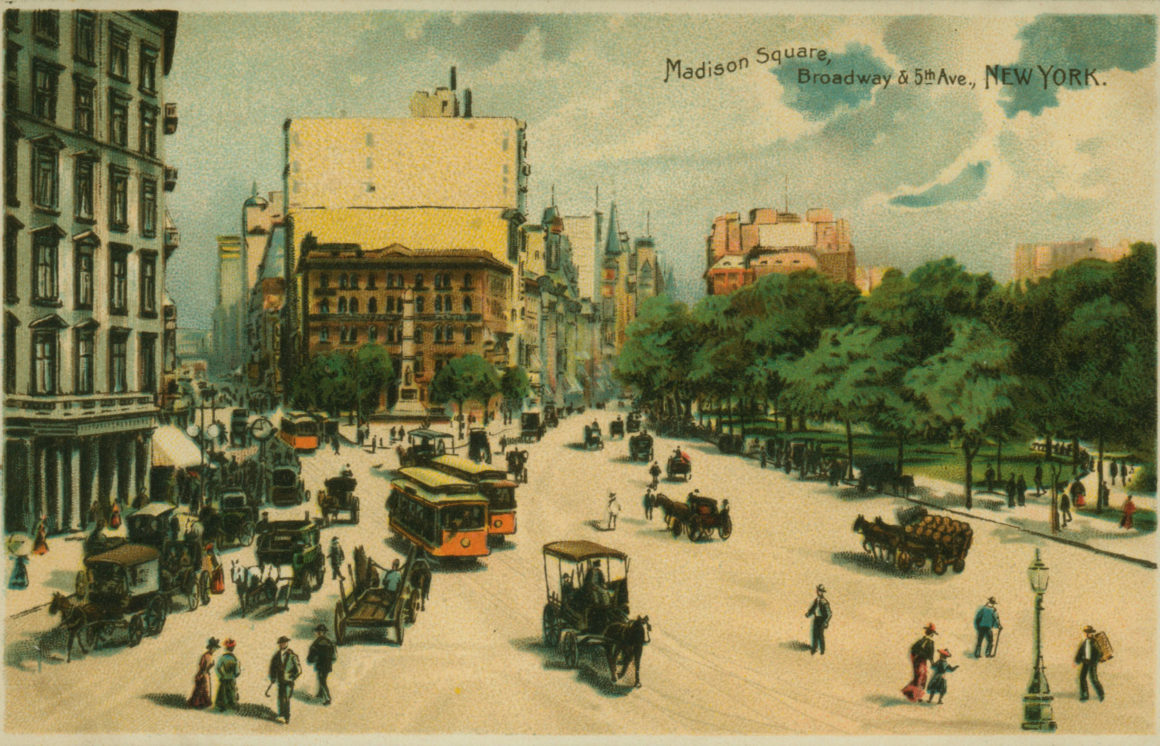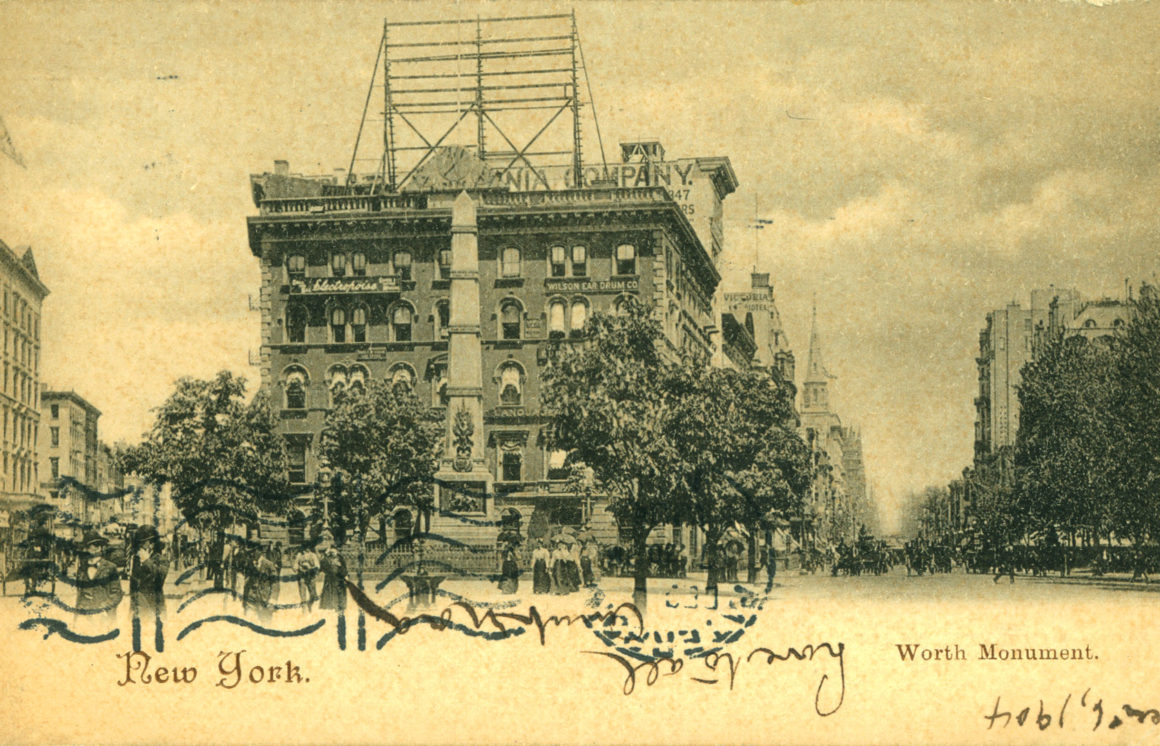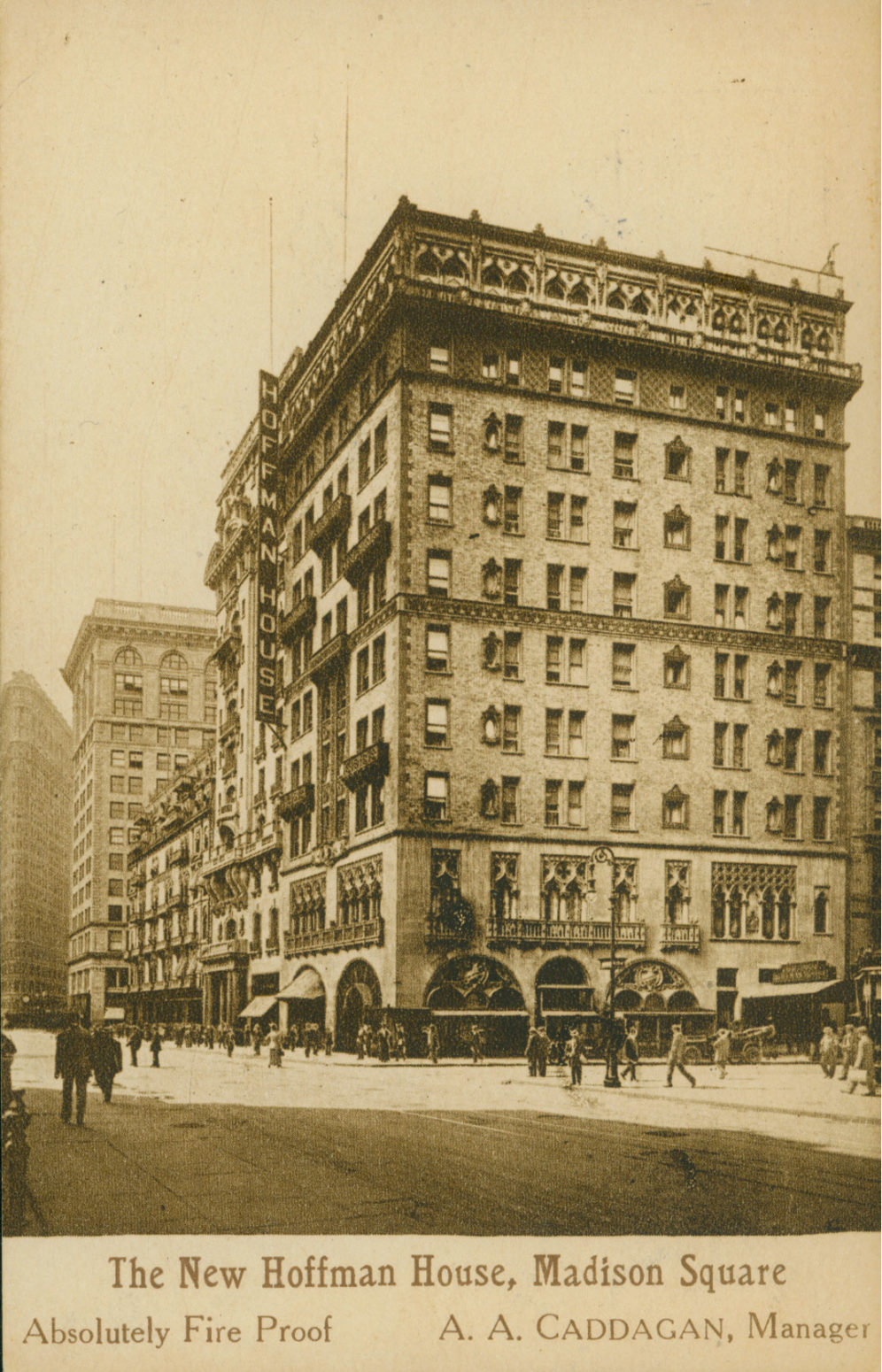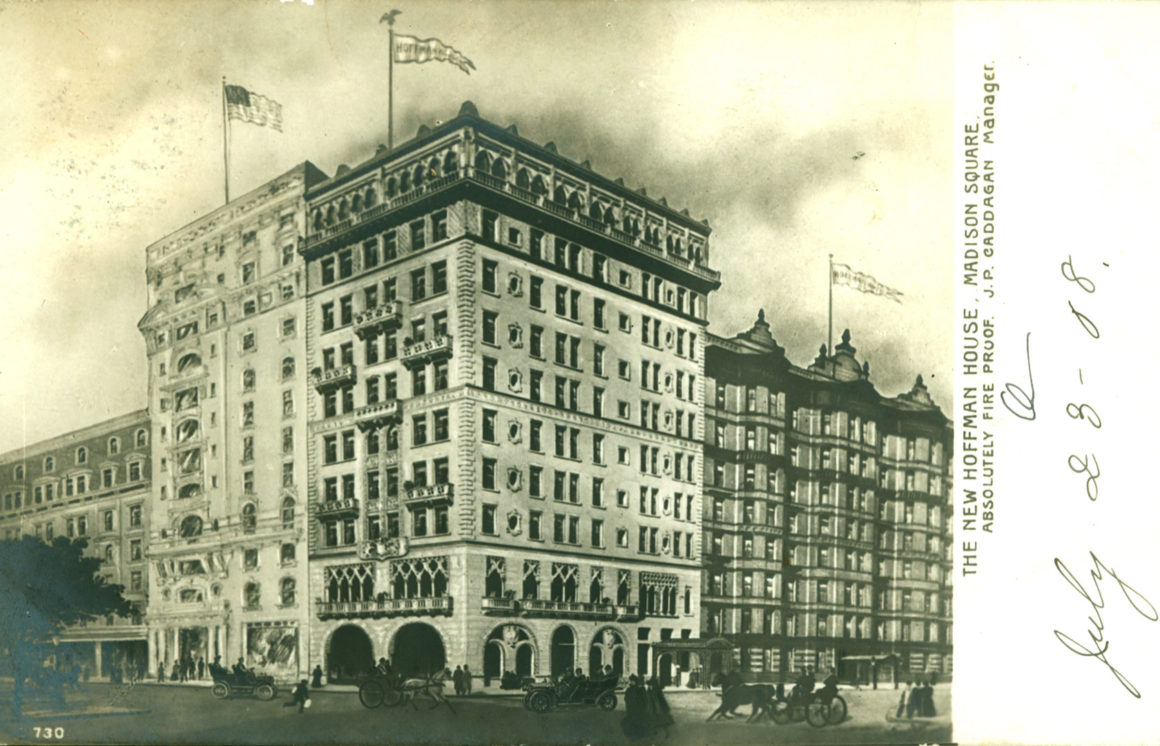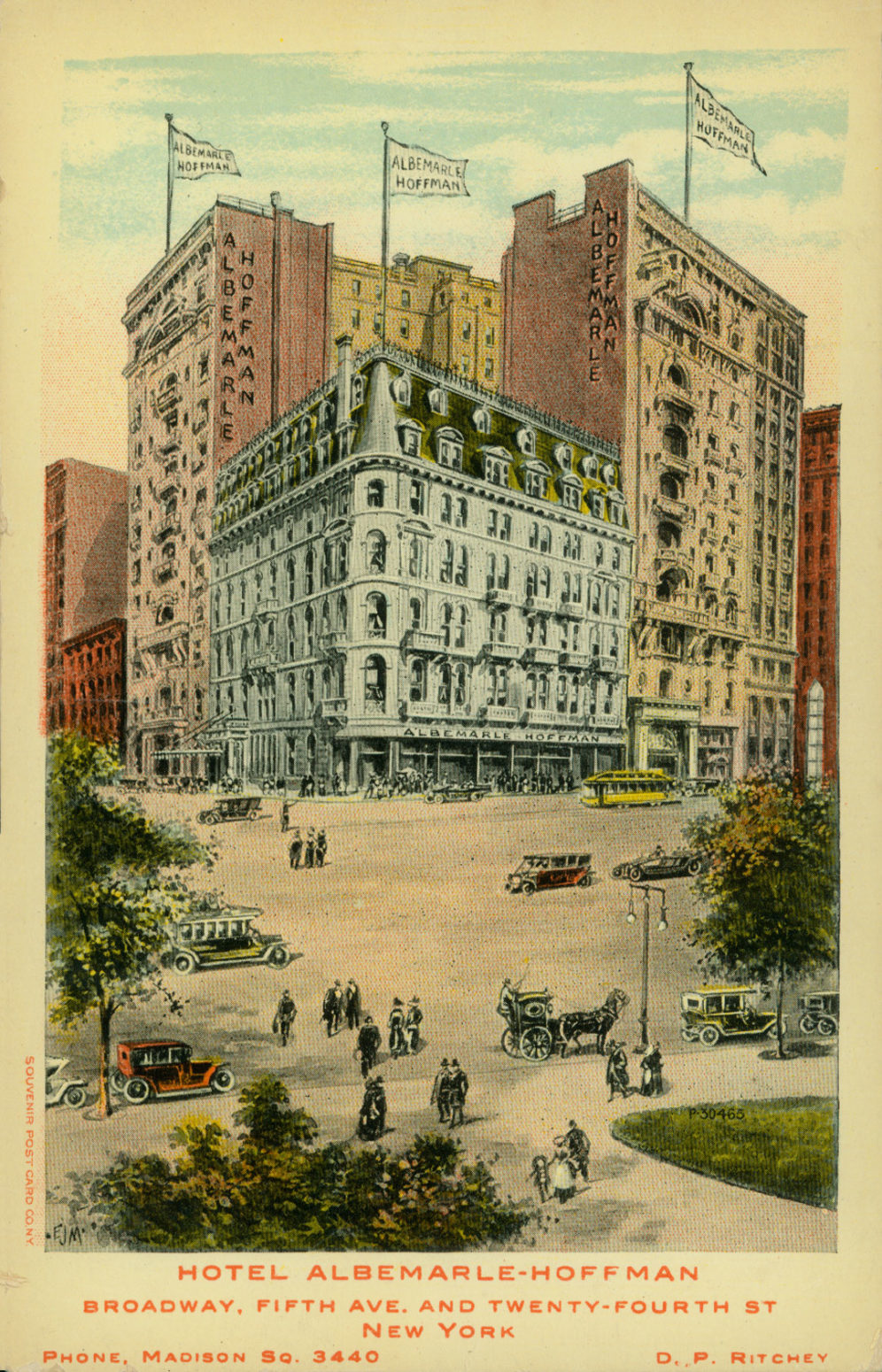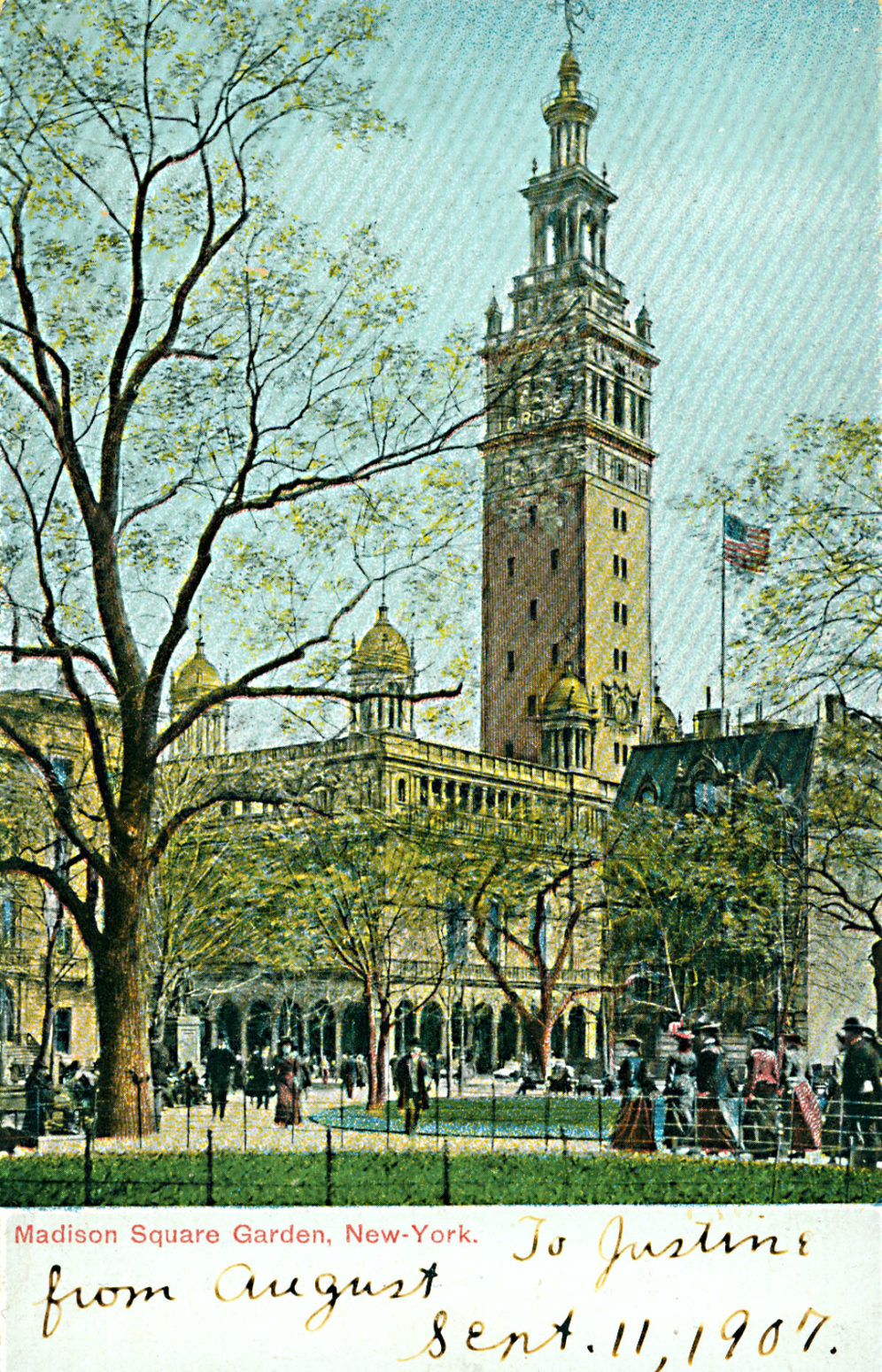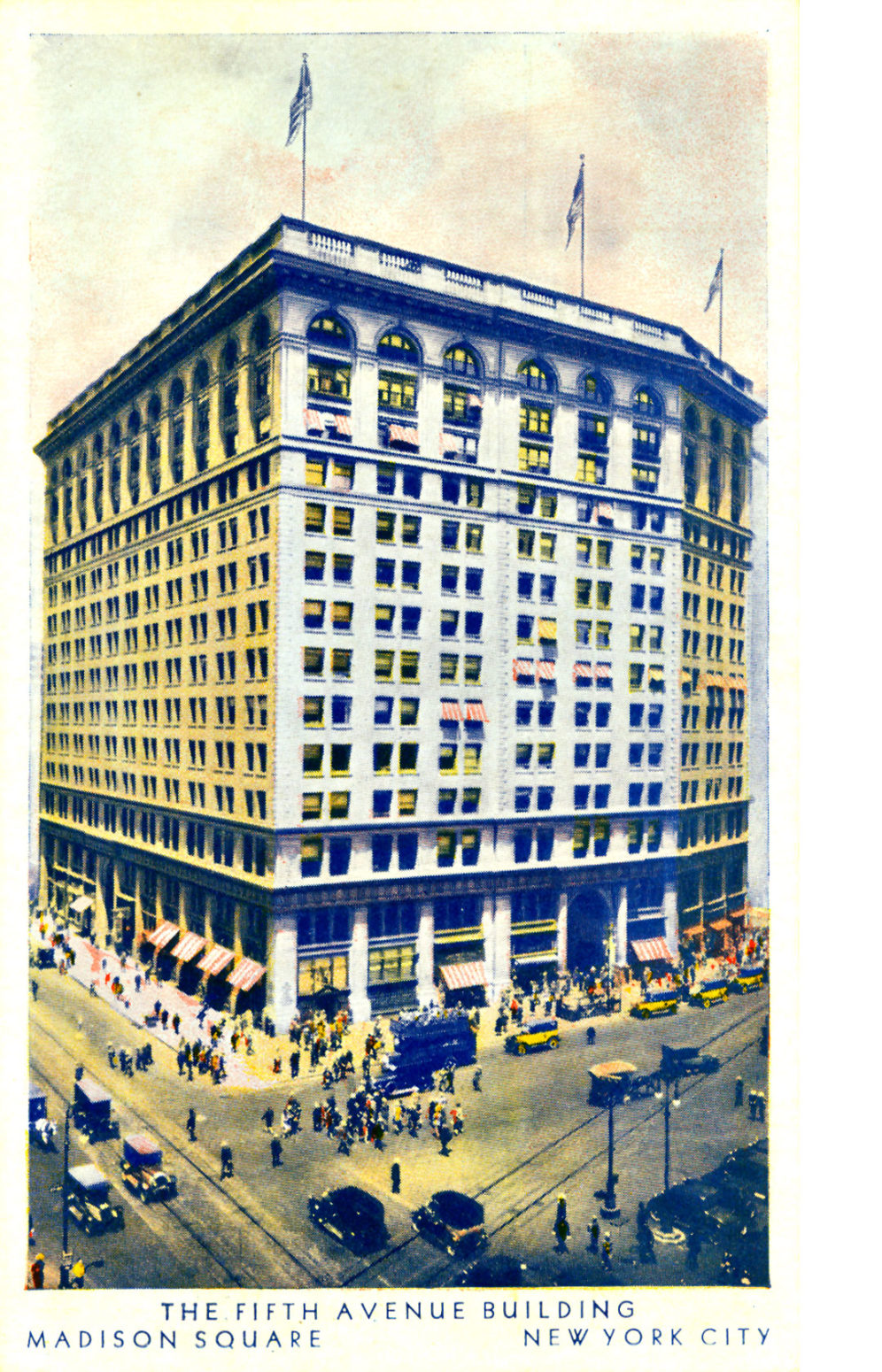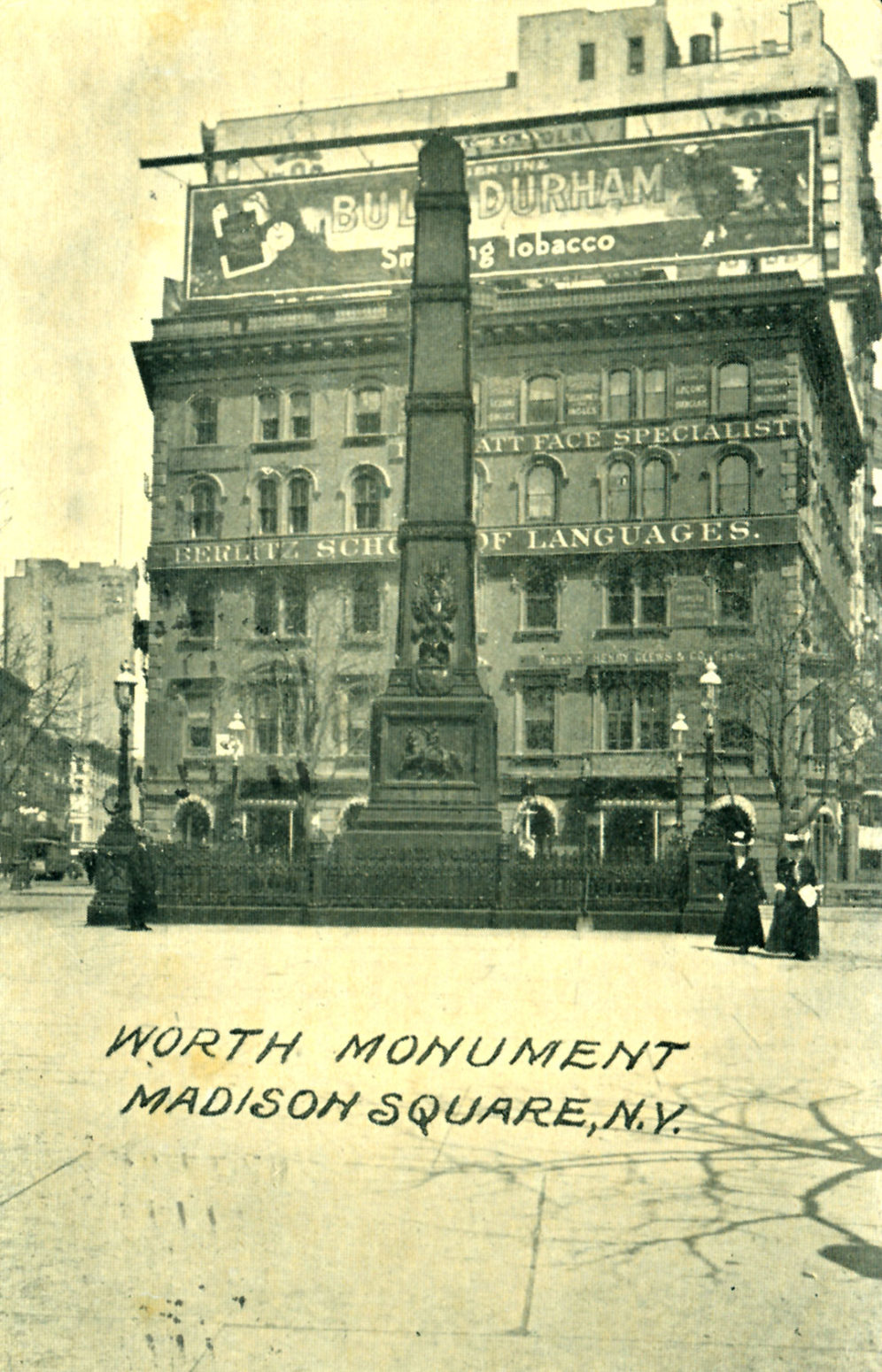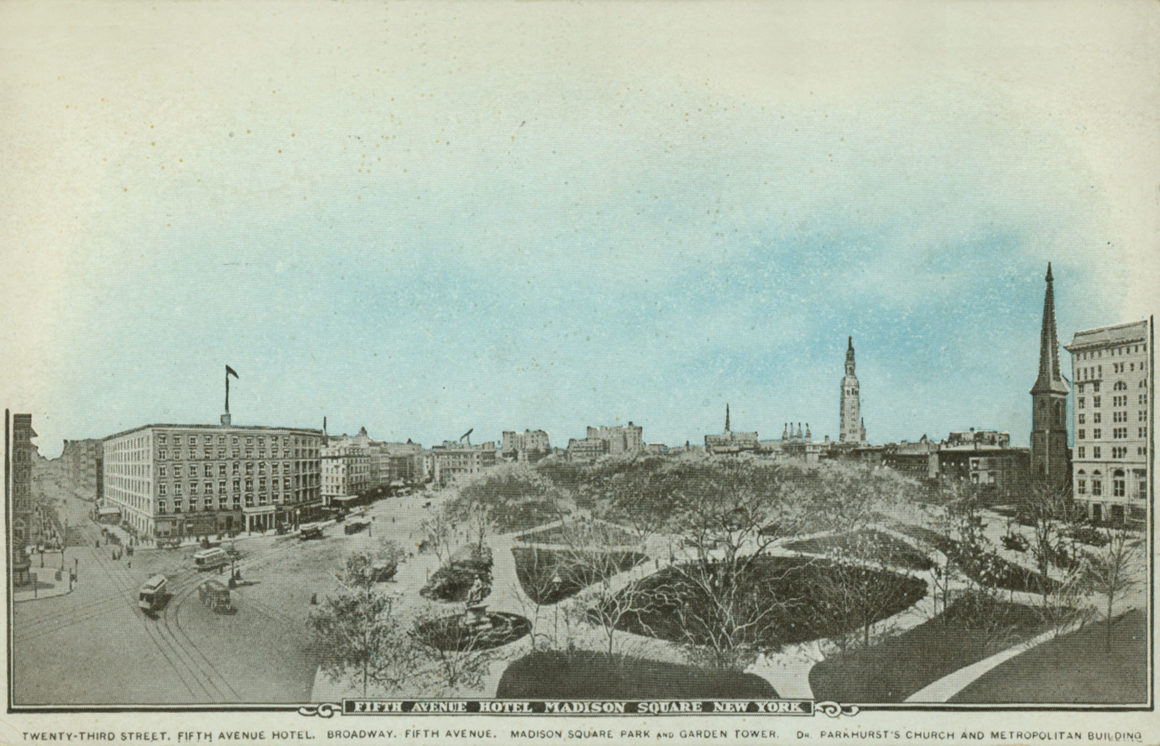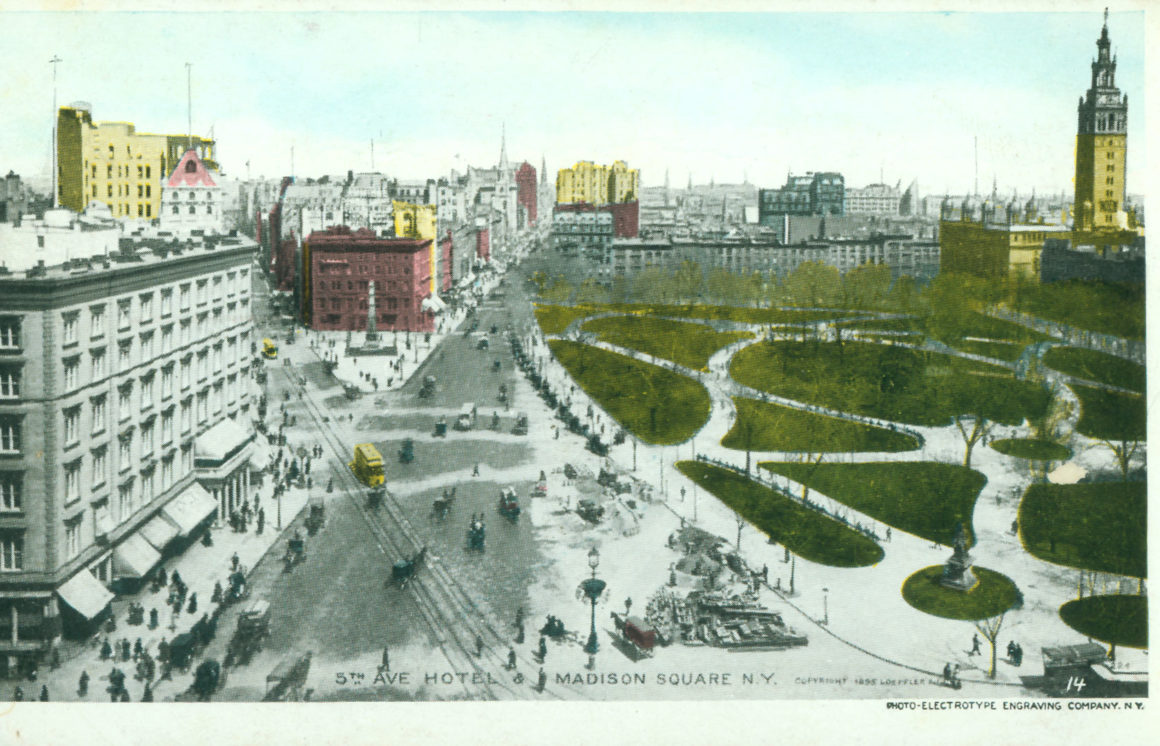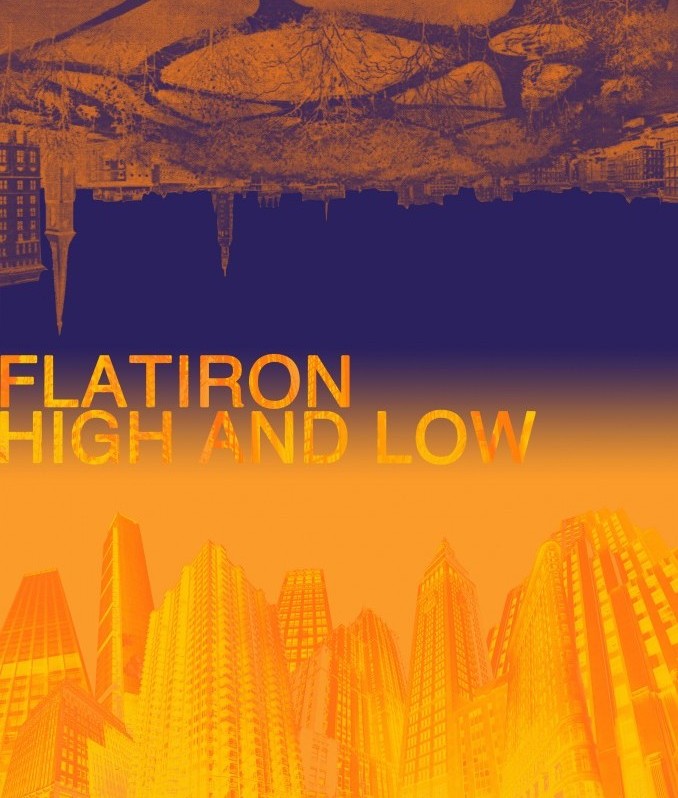
How can we mine a neighborhood’s history to uncover forgotten pasts?
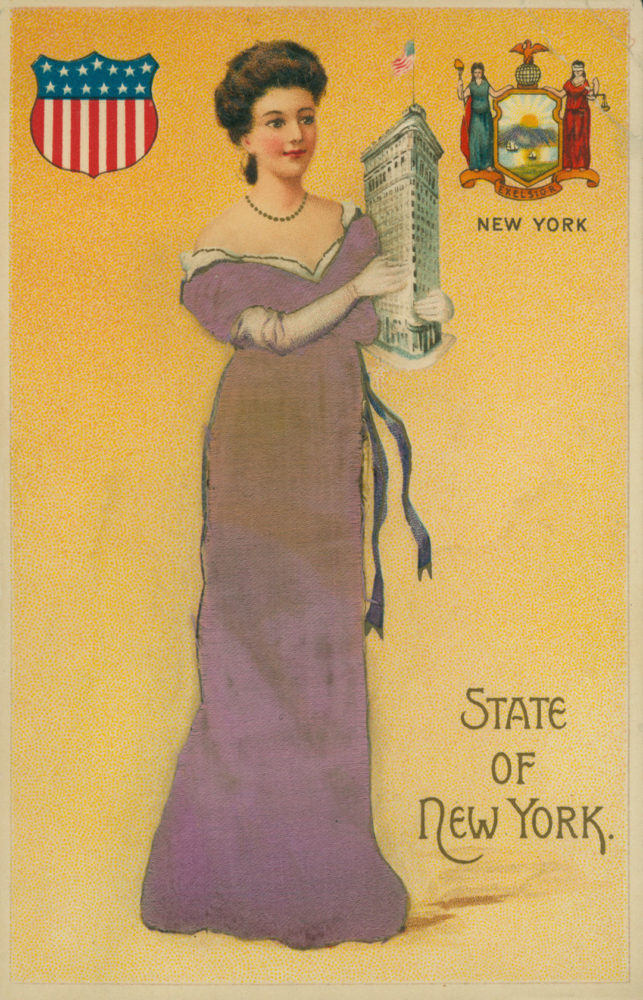
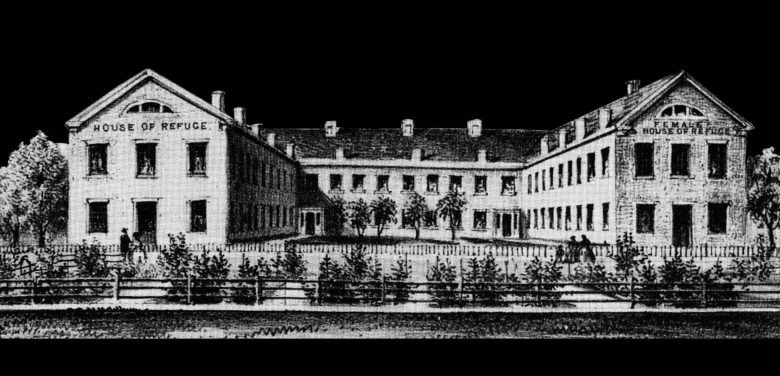
Vintage views, rare film footage, photographs, and architects’ sketches formed the body of the exhibition Flatiron High and Low, organized in cooperation with the Flatiron/23rd Street Partnership. Spotlighting two centuries of building culture in the Flatiron district, the exhibition imaginatively explored the multiple meanings of high and low—from height and cost to technology and culture—and showcased the built juxtapositions, typological mixtures, and architectural inventions characteristic of the Manhattan neighborhood.
In addition to the Flatiron’s centerpiece park and namesake building, the exhibition included a variety of built and unbuilt projects representative of the district’s history: charitable hospices and high-end hotels, popular entertainment venues and upper echelon institutions, ephemeral spectacles and high-tech enterprises. Among the featured projects were Roger Ferri’s visionary “green” skyscraper of 1976, an unbuilt project for the northeast corner of Madison Square Park.
Architectural historian Joan Ockman served as curator, and architect Eunjeong Seong designed the exhibition. Urban archivist Miriam Berman, author of Madison Square: The Park and Its Celebrated Landmarks, acted as the exhibition consultant, and selections from her collection of vintage postcards were included in the show.
A public panel, moderated by Deborah Berke, principal of Deborah Berke and Partners Architects and professor of architectural design at Yale, included architect Shohei Shigematsu, partner in the Office for Metropolitan Architecture and director of OMA*AMO New York; Robert A.M. Stern, founder and senior partner of Robert A.M. Stern Architects and Dean of the Yale School of Architecture; Carol Willis, architectural historian and founder of the Skyscraper Museum; and James Wines, artist, architect, and founder of SITE, the multidisciplinary architecture and environmental arts organization. Distinctive walking tours, offered by the Flatiron Partnership, highlighted key sites and stories beyond the exhibition walls.
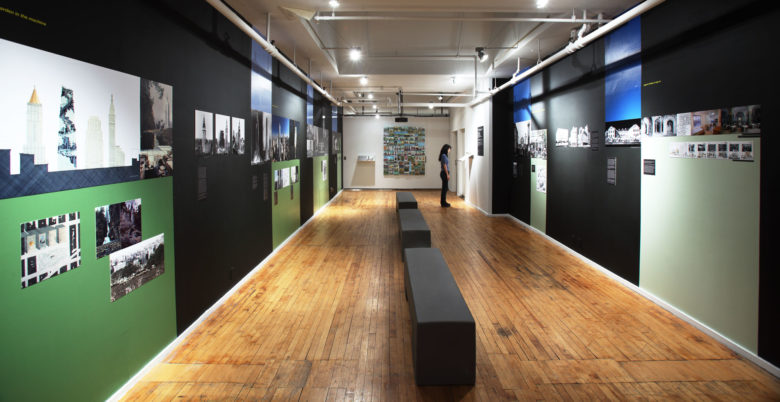
The exhibition was made possible by sponsorship and support from Newmark Knight Frank, managing and leasing agent for the Flatiron Building and 230 Fifth Avenue; the Ace Hotel, 20 West 29th Street; ’wichcraft, 11 East 20th Street; FotoCare, photography and printing specialists at 41 West 22nd Street; and Avery Digital Fabrication Lab at Columbia University.
